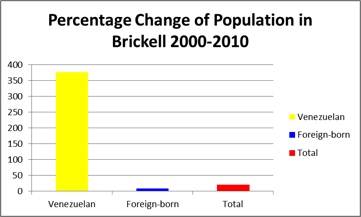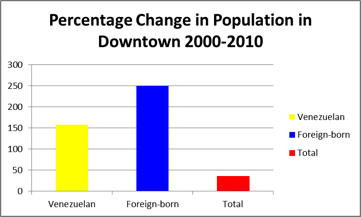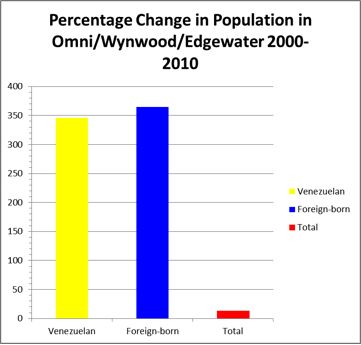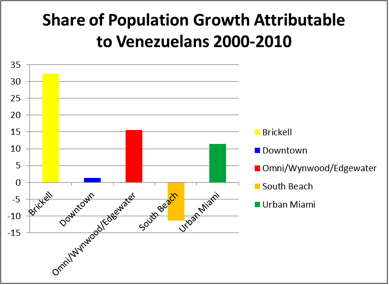This article was written by Peter Smith prior to the death of Hugo Chavez
Conventional wisdom in Miami suggests that the reign of Venezuelan President Hugo Chavez has sparked a large-scale immigration of Venezuelans to Miami. When Chavez was re-elected in late 2012, realtors and the Miami Herald predicted a second surge of Venezuelan arrivals. Now that his deteriorating health makes it seem likely that Chavez will not be in office for much longer, new speculation abounds that many Venezuelans may return home.
The common thinking is correct. The Venezuelan-American Chamber of Commerce counts 40,000 Venezuelans in South Florida; many arrived after 1999, when Chavez’s socialist policies prompted many in the upper class to relocate to the United States, where they perceived their bank accounts would find friendlier treatment. Weston and Doral are areas well known to Miamians as established enclaves, and Venezuelans with cash to spend are often credited alongside Brazilian and Israeli buyers for rescuing Miami’s condo market by scooping up property along Brickell Avenue at prices that look like steals today.
This story, an instant piece of Miami real estate lure, prompted me to ask, just what has been the impact of the Chavez-induced immigration on urban Miami? To find out, I mapped 2000 census tracts to 2010 tracts and combed through the data in a few of Miami’s urban communities: Brickell, Downtown, Omni/Wynwood/Edgewater, and South Beach.
The period between 2000 and 2010 also coincides with the maturation of urban Miami’s real estate market. Each of these four communities grew substantially during this decade, and possibly would have seen their respective Venezuelan populations grow regardless of Chavez’s presidency simply because more units were being constructed and more people were moving in. The Census data, however, lets us compare the rates of growth of the Venezuelan populations over the decade with the rates of growth of the foreign-born population as a whole and the total population in order to determine the extent to which Venezuelan immigration drove growth. A caveat: one thing that we cannot determine from the Census data is whether the Venezuelans moving into these neighborhoods are actually Venezuelans who arrived in Miami following Chavez’s election or whether they were among the Venezuelans already living in Miami in the pre-Chavez years; nevertheless, data shows that the Venezuelan population in Miami more than doubled, from under 18,000 to just shy of 39,000, in the first decade of the twenty-first century. Consequently, we can assume with reasonable certainty that many of the new arrivals to urban Miami arrived during the Chavez presidency.
According to the 2010 Census numbers, there are 2,545 Venezuelans living in Brickell, Downtown, Omni/Wynwood/Edgewater, and South Beach (hereinafter collectively referred to us urban Miami). This accounts for just 6.5% of the total Venezuelan-born population in Miami-Dade County (38,972). It also accounts for just 5.3% of the total foreign-born population in urban Miami (47,843) and just 2.7% of the total urban population (89,771).
Yet, while these percentages may seem low, they represent an increase from 2000, and that growth has come at a higher rate than the growth of both the foreign-born population and the total population. This means that Venezuelans have driven a disproportionately high amount of the population growth in urban Miami relative to other populations.
Here’s the data as a bar graph:
And here’s the data for each neighborhood. Some neighborhoods, like Brickell and Omni/Wynwood/Edgewater, saw large jumps in both real and relative terms of their Venezuelan, foreign-born, and total populations. On the other end, South Beach actually saw a drop in its Venezuelan population, but this loss was offset by modest growth of other groups. Falling somewhere in between, Downtown saw unmatched gains in the growth rate of its Venezuelan population, but that population was and still is very small in comparison to the larger foreign-born and total populations.
Finally, from the data above we can calculate the share of population growth in urban Miami and each neighborhood respectively from 2000 through 2010 that is attributable to Venezuelans.
At thirty-two percent and sixteen percent respectively, Brickell and the Omni/Wynwood/Edgewater area benefited the most from Venezuelan immigration. As a result of this growth and modest growth in Downtown, Urban Miami saw nearly twelve percent of its growth over the past decade come from Venezuelan-born immigrants. So, while Miami’s growth will likely push forward regardless of what happens to Hugo Chavez and his presidency, the impact of Venezuelan immigration on urban Miami is noteworthy, particularly for what might be considered the newer, trendier neighborhoods. There is a fair amount of truth to the notion that Chavez’s reign has accelerated up Miami’s urban growth and perhaps even some truth to the speculation that whatever happens in Venezuelan politics will have a very real effect on Miami’s urban real estate market.






